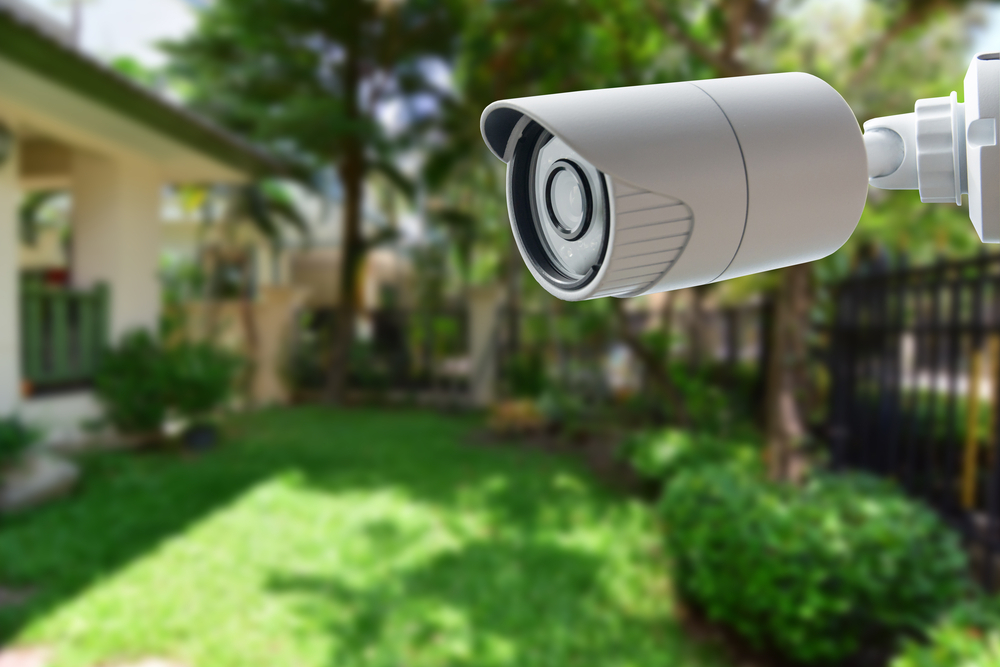A Guide to EarthLink Compatible Modems

EarthLink offers some of the fastest internet speeds available, but it’s important to get a modem that can both deliver the speed you pay for and ensure everyone in your house can take advantage. Fortunately, there are several options to choose from. This article will focus on units that are compatible with EarthLink internet and provide you with a single-device solution, meaning a combination modem and router.
After you connect your EarthLink internet service, you need to do two things with the signal: bring it into your home and send it out to the different devices that depend on it. While this used to be delegated to two different devices, a modem, and a router, nowadays it’s common for these to be combined into one physical unit.
A modem carries your EarthLink signal into the home. You can connect to it using a wired connection via an Ethernet cable, but that’s your only option; you can’t connect to it via Wi-Fi. A router, in the context of typical home internet, is what makes your internet signal available via Wi-Fi. While you can purchase these devices separately for EarthLink service, it can save time and money to lump them into a single device.
EarthLink offers different kinds of service; satellite, cable, and fiber, so the following modem/router combinations have been chosen based on the service they’re best suited for.
- Best modem for EarthLink satellite internet
- Best modem for EarthLink gigabit internet
- Best modem for EarthLink 300Mbps internet
- Best modem for EarthLink 100Mbps internet
- What to look for in an EarthLink modem
- Frequently asked questions (FAQs)
Best modem for EarthLink satellite internet
Arris Surfboard G34
The Arris Surfboard G34 is a great option for EarthLink satellite internet service, primarily because it’s a powerful modem that can accept the cable that brings service into your home. Your satellite internet signal gets transmitted to a small dish that’s attached to the outside of your home. It’s then sent through a coaxial cable that runs to your modem/router. The Surfboard G34 is an effective solution for this kind of setup because it both accepts your EarthLink service and gives users two options for getting it into their devices: Ethernet or Wi-Fi.
While the Ethernet connection is standard, the Wi-Fi that comes with the Arris Surfboard G34 is known as Wi-Fi 6. This gives it the ability to provide a stronger, more reliable signal than earlier iterations of Wi-Fi technology. One way it does this is by beamforming. This involves beaming a signal directly to devices within its range instead of simply broadcasting a signal in all directions.
The Surfboard G34’s Ethernet connections enable up to four devices to connect at the same time. For example, you could connect a gaming console and a smart TV and still have two connections left for laptops, desktops, or other devices.
In addition, the G34 comes with an app that helps you set up your network and manage settings, such as parental controls. This gives you more flexibility when it comes to network management, particularly if you want to adjust settings down the road.
Best modem for EarthLink gigabit internet
Asus RT-AC5300
EarthLink’s fastest service requires a fast modem/router combo with high throughput, and the best option is the Asus RT-AC5300, particularly because it can handle speeds up to 5334Mbps. Also, the RT-AC5300 accepts a fiber-optic connection, as opposed to cable, making it an ideal solution for EarthLink’s highest speeds, which are sent through fiber lines. With EarthLink’s fastest home internet offering, you can get up to 5Gbps, and many modems don’t have the ability to handle these kinds of speeds. The Asus RT-AC5300, on the other hand, can both accept internet this fast and ensure devices within a 5,000 square foot radius have a reliable signal.
The Asus RT-AC5300 has three available signal bands, 5GHz, 2GHz, and 4GHz. It’s important to note that if you want to take advantage of all the speed the RT-AC5300 provides, you would have to use all three bands simultaneously. For example, you could have two devices connected to the 5GHz network, another connected to the 2GHz network, and a third connected to the 4GHz network. These would appear as three separate networks in your home Wi-Fi setup.
One feature that sets the Asus RT-AC5300 apart from others is it can intelligently connect devices to different bands based on what works best for your network. For instance, suppose you have several users connected to the 5GHz band at the same time, and they’re using a lot of bandwidth. The RT-AC5300 can automatically switch one or more devices to the 2GHz or 4GHz band to ensure everyone gets adequate service.
Best modem for EarthLink 300Mbps internet
Netgear Nighthawawk R6700
Even though the Netgear Nighthawk R6700 may not be fast enough to handle EarthLink’s 5Gbps service, it has more than enough throughput for its 300Mbps service. The Nighthawk R6700 tops out at 1750Mbps of throughput, and this allows it to serve up to 25 Wi-Fi devices at the same time. So, not only can you and all of your friends connect simultaneously, but smart devices like printers and refrigerators can also interface with the internet.
One of the unique features of the Netgear Nighthawk R6700 is its 3.0 USB port. This gives you the ability to connect USB-enabled devices directly to your modem. The USB 3.0 connection fits into the standard, rectangular USB port you would see on older Macbooks and PCs, as opposed to the more modern USB 4.0, which needs the smaller, oval-shaped USB-C connection. This makes the USB connection on the R6700 a convenient match for many devices, even older ones. The throughput with USB 3.0 goes as high as 4.8Gbps, so the R6700 gives you more than enough speed.
Another feature that makes the Nighthawk R6700 a good match for EarthLink’s 300Mbps plan is its ability to perform beamforming, similar to the Asus RT-AC5300. This makes it possible for each of the router’s ports to provide service to the devices connected to it—without one process negatively impacting the others. For example, if you have a media storage device that you use as a server to play recorded videos, the dual-core processor gives the USB port the power it needs to facilitate these playback features. If you’re also watching an HD video on a laptop connected to a different port, the dual-core processor makes it possible for you to enjoy seamless playback on your laptop as well. As a result, you get the most out of your EarthLink internet service.
The Nighthawk’s most unique feature, however, is its 1GHz dual-core processor. This helps the router process the load required to accurately distribute individual signals to each port. Each device connects through a digital port, and it’s possible for two or more devices to interfere with each other during operation. The Nighthawk’s processor helps prevent these kinds of conflicts.
Best modem for EarthLink 100Mbps internet
TP-Link AC1750
The TP-Link AC1750 comes with more than enough speed-handling capability to get the most out of your EarthLink 100Mbps package, as well as a couple of extras to enhance the user experience. It’s an ideal system for households that have multiple gamers, for instance, because it has three antennas that help extend its range. So, if you have gamers in three different rooms, you can put the TP-Link AC1750 in a central location, and all three can run, jump, kick, and dunk for hours.
You also have the option of connecting USB devices to the TP-Link AC1750. This makes it an ideal unit for setting up a home office, complete with a printer and one or two computers connected either to Wi-Fi or to one of its four Ethernet ports. Another powerful home office feature is the gigabit wide area network (WAN) port. Using this, you could set up two home offices, one with the AC1750 in it and the other with either another identical unit or a different router. All you have to do is connect the two using WAN and you can send a gigabit of bandwidth to your second office.
Even though the TP-Link AC1750 is a versatile unit, one drawback, especially when compared with the Nighthawk R6700, is it doesn’t have a dual-core processor. As a result, during heavy usage of multiple ports, there’s a higher possibility of getting shaky service. However, under normal use, you should be able to maximize the 100Mbps that comes with EarthLink’s internet service.
What to look for in an EarthLink modem
What you want to look for in an EarthLink compatible modem will largely depend on the kind of service you have, particularly the data transfer medium—satellite, cable, or fiber—and speed. As a general rule of thumb, you want a modem with a cable connection for a cable or satellite internet. This means it takes a coaxial cable, whose male connector is round with a small pin in the middle. If you’re looking for fiber internet, you need a modem that can handle a fiber-optic connection. This is typically connected through an Ethernet port. Your service provider will usually connect an adaptor to your Ethernet port with a connection for fiber on the other end. The installer then inserts the fiber-optic cable that comes from the street into this port.
Another factor when looking for an EarthLink compatible modem is how much speed it can handle. It’s usually better to get one that can take a little more speed than what your service offers. This way, if you decide to upgrade, you can do so without having to switch your modem. The options listed above all provide enough throughput for at least 1Gbps of service, so unless you get more than that, you should be good to go in the future.
Frequently asked questions (FAQs)
Do you need a modem/router combination unit for EarthLink service?
No, you don’t necessarily need a unit that performs the duties of both a modem and a router. You can use a modem to bring your internet signal into your home and a separate router unit to distribute it to the devices in your home.
Can all of EarthLink’s services use the same modem?
No, although satellite and cable service can use the same kind of modem, you need a different type for fiber-optic internet service because they use different kinds of cables. You can double-check your modem to see which kinds of service it works with.
*Pricing varies by location and availability. Speeds may vary. All prices subject to change; for current pricing and availability visit our internet service page. Prices as of 5/20/22.
Disclosure | Updater articles are based on our own data and research, independent from partner relationships. We are not compensated by partners for information and opinions presented here. Our Editorial Terms of Service can be found here.














